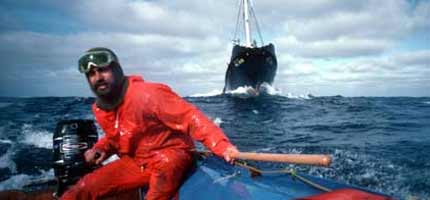
A Greenpeace volunteer in front of an Icelandic whaler
Commercial whaling during the last century decimated most of the world's whale populations. Estimates suggest that between 1925, when the first whaling factory ship was introduced, and 1975, more than 1.5 million whales were killed in total.







